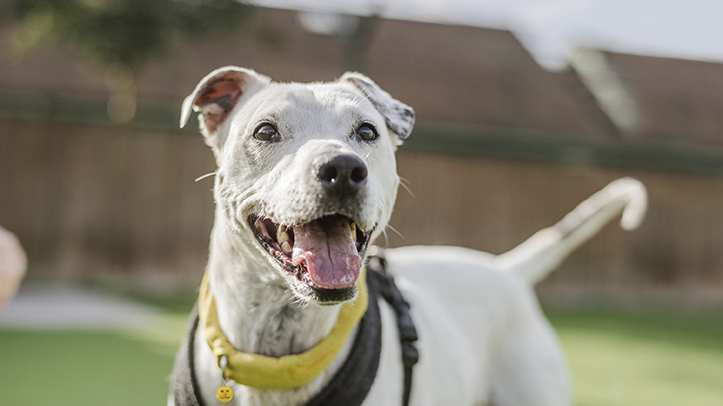New research from Dogs Trust – as students across the UK have returned to the classroom after the summer break – has revealed that the nation should head “Bark to School” for lessons in dog body language, in a bid to reduce the number of dog bites.
Results released from the charity’s National Dog Survey show that 71% of owners wrongly believe they are more likely to be bitten by a dog they don’t know than by their own pet.
However, according to well-established research, this is not the case, with the majority of dog bites to children under 14 years being from dogs known to the children in the home.
As most acts of dog aggression, including bites, happen when dogs feel worried, scared or stressed, Dogs Trust believes many dog-related incidents could be prevented if owners can spot the early warning signs that their dogs are distressed – before the situation escalates.
This includes recognising subtle changes in body language, such as their ears going back, tension in their body, or their tail tucked under.
Despite this, newly published results from the charity’s National Dog Survey, which provides insights into over 400,000 of the UK’s dogs and their owners, reveal that 76% are unable to correctly read dog body language, misunderstanding the subtle signs that their pets are stressed or worried.
Some of the body language signs and signals missed the most, according to the National Dog Survey, were:
- A common misconception is that a dog rolling over when approached means they want a belly rub. 76% failed to spot that this could mean a dog is feeling uncomfortable or needs space;
- Two-thirds of those surveyed did not know that yawning can indicate that their dog is worried and needs space;
- 59% failed to recognise that a dog licking their lips with their ears pulled back means they could be worried and need space, and 53% failed to recognise that a dog licking their lips while turning their head away could also be a sign that a dog is uncomfortable; and
- Around a third of those surveyed said they thought a wagging tail always means a dog is happy. However, dogs wag their tails for all sorts of reasons – tail movements are a great way to communicate – but they don’t always mean a dog is happy.
Maria Murray, associate director prevention and community engagement at Dog’s Trust, said: “We’ve seen a huge increase in the UK’s dog population over the last few years, and around a third of all UK households now own a dog. Along with the growth in ownership, we have also seen a rise in the number of dog bite incidents and injuries, most of which happen within the home involving known dogs.
“As acts of aggression, including bites, are often a response to dogs feeling stressed or anxious, many of these incidents can be avoided if owners can spot the early warning signs that their dog is in distress or uncomfortable and remove their dog from the situation or take steps to prevent things escalating.”
Ms Murray added: “Very often, dog bites in the home are preceded by what can be seen as harmless interactions, such as cuddling, hugging, or kissing the dog. But while we might like these things, our dogs don’t necessarily agree and will try to tell us through their body language.
“Unfortunately, when these signs are missed, it can have a huge impact on all involved, including the dog. Over the last year, we have received over 8,000 calls from owners looking to relinquish their dog due to problem behaviours, and in cases where the worst happens and someone is injured, owners may have to make the devastating decision to have their dogs euthanised.”


